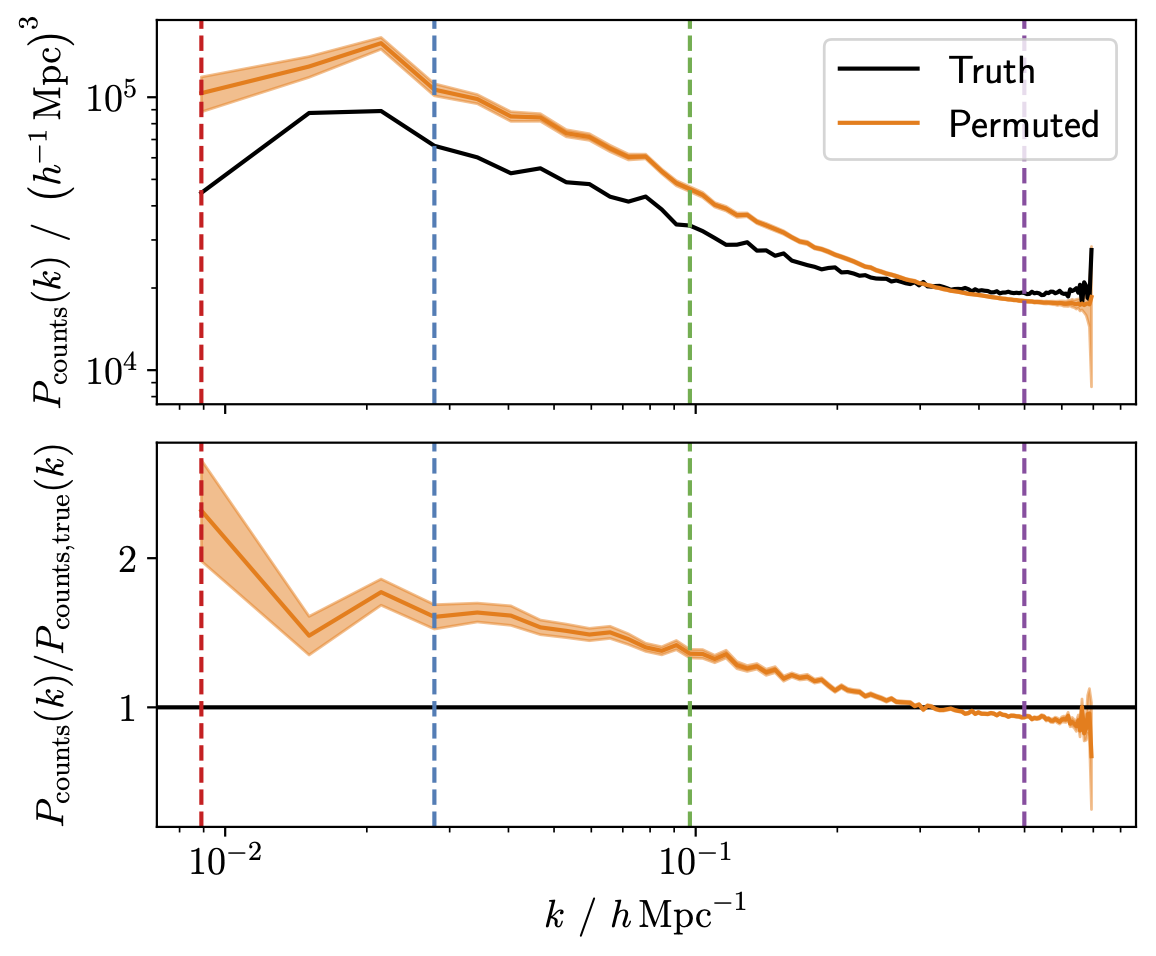Bye-bye, Local-in-matter-density Bias: The Statistics of the Halo Field Are Poorly Determined by the Local Mass Density
Published in ApJL, 2024
Recommended citation: D.J. Bartlett, M. Ho and B.D. Wandelt (2024). "Bye-bye, Local-in-matter-density Bias: The Statistics of the Halo Field Are Poorly Determined by the Local Mass Density." ApJL 977 L44.
Abstract
Bias models relating the dark matter field to the spatial distribution of halos are widely used in current cosmological analyses. Many models predict halos purely from the local Eulerian matter density, yet bias models in perturbation theory require other local properties. We assess the validity of assuming that only the local dark matter density can be used to predict the number density of halos in a model-independent way and in the nonperturbative regime. Utilising N-body simulations, we study the properties of the halo counts field after spatial voxels with near-equal dark matter density have been permuted. If local-in-matter-density (LIMD) biasing were valid, the statistical properties of the permuted and unpermuted fields would be indistinguishable since both represent equally fair draws of the stochastic biasing model. If the Lagrangian radius is greater than approximately half the voxel size and for halos less massive than $\sim10^{15}\,h^{-1}{\rm\,M_\odot}$, we find the permuted halo field has a scale-dependent bias with greater than 25% more power on scales relevant for current surveys. These bias models remove small-scale power by not modeling correlations between neighboring voxels, which substantially boosts large-scale power to conserve the field’s total variance. This conclusion is robust to the choice of initial conditions and cosmology. Assuming LIMD halo biasing cannot, therefore, reproduce the distribution of halos across a large range of scales and halo masses, no matter how complex the model. One must either allow the biasing to be a function of other quantities and/or remove the assumption that neighboring voxels are statistically independent.
 Power spectrum of the halo counts field before and after permuting voxels with approximately equal density, for halos of mass $10^{13.7}-10^{14.0} \, h^{-1} {\rm \, M}_\odot$ . The permuted fields have significantly greater power on large scales, thus LIMD halo biasing cannot reproduce the distribution of halos. The mean and standard deviation are computed over 100 permuations. The vertical coloured lines correspond to the wavenumbers used to characterise this discrepancy in later plots.
Power spectrum of the halo counts field before and after permuting voxels with approximately equal density, for halos of mass $10^{13.7}-10^{14.0} \, h^{-1} {\rm \, M}_\odot$ . The permuted fields have significantly greater power on large scales, thus LIMD halo biasing cannot reproduce the distribution of halos. The mean and standard deviation are computed over 100 permuations. The vertical coloured lines correspond to the wavenumbers used to characterise this discrepancy in later plots.
